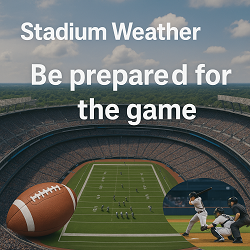Twining Blue Lake Trail, NM Weather Forecast and Current Conditions
Current Conditions From Nearby Station Switch to Metric Units
Feels Like 59°F
at
Current Conditions From Nearby Station Switch to Metric Units
Feels Like 59°F
at
Point Forecast at a Glance







7-Day Temperature Trend
Week Ahead Summary
Cooling trend continues with high temperatures dropping from 46°F to 30°F. Some snow possible with at least 2 days showing precipitation chances of 20% or higher.
Climate Context
This week's forecast shows temperatures running 9°F below the historical average for November. Normal highs for this period are around 50°F with lows around 20°F.
This Date in Weather History
1955 - An early arctic outbreak set many November temperature records across Oregon and Washington. The severe cold damaged shrubs and fruit trees. Readings plunged to near zero in western Washington, and dipped to 19 degrees below zero in the eastern part of the state.
More on this and other weather history
Twining Blue Lake Trail, NM 7 Day Weather Forecast Details
Tuesday Nov 11

Day: Mostly sunny. High near 46, with temperatures falling to around 37 in the afternoon. Northwest wind 5 to 10 mph.

Night: Partly cloudy, with a low around 30. West wind 5 to 10 mph.
Wednesday Nov 12

Day: Mostly sunny. High near 46, with temperatures falling to around 37 in the afternoon. West wind 5 to 10 mph.

Night: Mostly cloudy, with a low around 32. West wind 10 to 15 mph.
Thursday Nov 13

Day: Mostly sunny, with a high near 45. West wind 10 to 15 mph.

Night: Partly cloudy, with a low around 33.
Friday Nov 14

Day: Mostly sunny, with a high near 43.

Night: Mostly cloudy, with a low around 31.
Saturday Nov 15

Day: A slight chance of rain and snow showers after 11am. Partly sunny, with a high near 41. Chance of precipitation is 20%.

Night: A chance of snow showers. Partly cloudy, with a low around 28. Chance of precipitation is 30%. New snow accumulation of less than half an inch possible.
Sunday Nov 16

Day: A chance of snow showers. Partly sunny, with a high near 33. Chance of precipitation is 40%. New snow accumulation of 3 to 5 inches possible.

Night: A chance of snow showers before 5am. Mostly cloudy, with a low around 22. Chance of precipitation is 40%. New snow accumulation of 1 to 3 inches possible.
Monday Nov 17

Day: Partly sunny, with a high near 30.

Night: Mostly cloudy, with a low around 21.
Sun & Moon Monthly
Sunrise 6:36 AM
Sunset 4:57 PM
Last Light 5:24 PM
Moonset 12:47 PM

Weather Near Twining Blue Lake Trail
Contiguous United States Extremes
Mon's High Temperature
100 at 2 Miles West Of Pala, CA
Tue's Low Temperature
10 at Mount Washington, NH and Snowshoe, WV
Weather Folklore
In the winter, a heavy snow is predicted if the barometer falls and the temperature rises.

Current subscribers - login to your ClearSky account
How We Provide Better Local Weather
Current conditions: We use the nearest available station to your location - including professional MESONET/MADIS and local weather stations - often miles closer than regional airports.
Forecasts: National Weather Service point forecasts predict for your specific area, not broad regional zones, making them far more relevant to your location.

